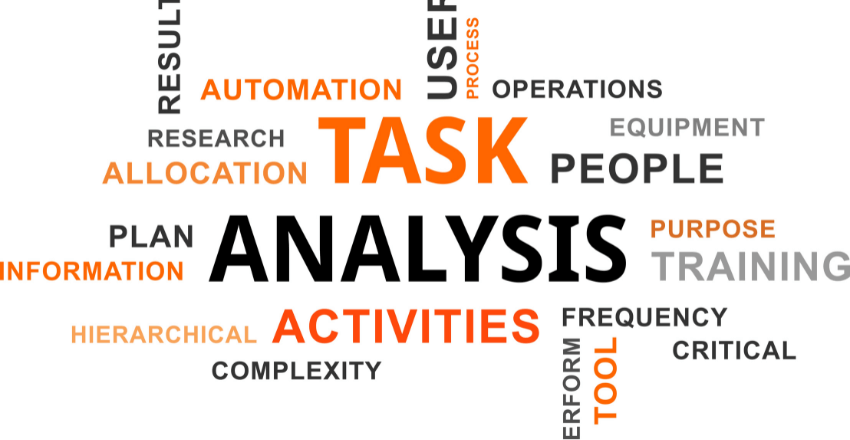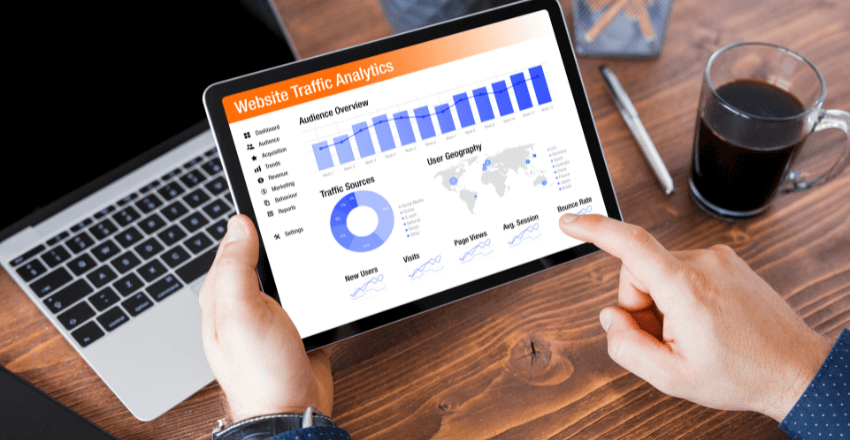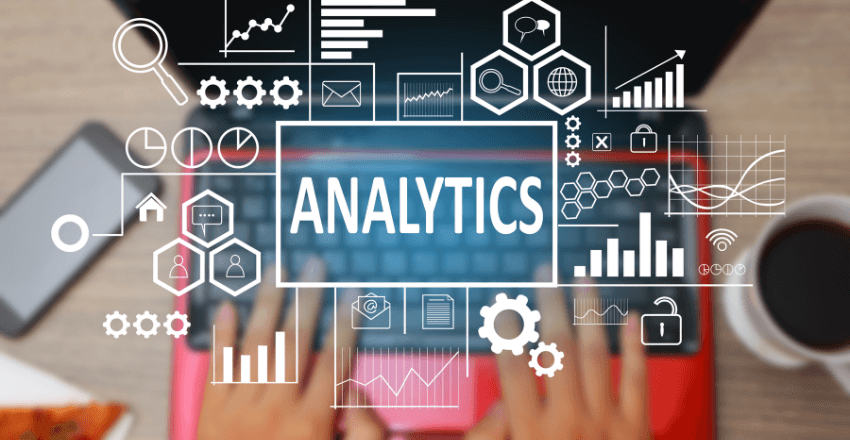Definition of self-service data analytics
Self-service data analytics refers to the practice of empowering individuals, regardless of their technical expertise, to independently access and analyze data for insights and decision-making purposes.
It involves providing users with user-friendly tools and interfaces that allow them to explore, manipulate, and visualize data without relying on IT teams or data experts.
With self-service analytics, users can perform tasks such as querying databases, creating interactive visualizations, conducting statistical analyses, and uncovering valuable patterns or trends within the available datasets.
Importance and relevance in today’s data-driven world
In our increasingly data-driven world, the ability to harness the power of information has become crucial for organizations across industries. Self-service data analytics plays a vital role in this context by democratizing access to data insights.
Unlike traditional approaches where only skilled analysts could handle complex datasets or generate reports, self-service analytics enables business users at all levels to explore and extract knowledge from large volumes of structured or unstructured information.
The importance of self-service analytics lies in its capacity to empower non-technical employees with the means to make informed decisions based on reliable evidence.
By eliminating dependency on IT teams or external consultants for every analytical task, organizations can enhance agility and efficiency while reducing bottlenecks in the decision-making process.
Moreover, as markets become increasingly competitive and customer expectations rise, having real-time access to relevant insights is crucial for gaining a competitive advantage.
Self-service analytics also fosters a culture of data-driven decision making throughout an organization.
By allowing non-technical users from various departments (such as marketing, sales, finance) to explore datasets independently and gain insights specific to their needs, it promotes cross-functional collaboration and encourages innovative problem-solving approaches based on accurate information.
Self-service data analytics represents a transformative approach that empowers individuals across an organization with the ability to navigate, analyze, and derive insights from complex data sets.
By democratizing access to data and promoting a culture of data-driven decision-making, organizations can unlock new opportunities for growth, innovation, and efficiency in today’s dynamic business landscape.
Overview of Self-Service Data Analytics
Understanding the concept of self-service analytics
In today’s fast-paced, data-driven world, organizations face the challenge of extracting valuable insights from vast amounts of data. Traditional data analysis methods often involve reliance on IT teams or data analysts with specialized skills.
However, self-service data analytics has emerged as a powerful solution that empowers non-technical users to explore and analyze data independently.
Self-service analytics refers to the process by which individuals within an organization can access and analyze data on their own, without depending on IT support or technical expertise.
It allows users to interact with and explore data through user-friendly interfaces and intuitive tools, enabling them to derive actionable insights without significant technical knowledge.
Key components and features
One of the key components of self-service analytics is its user-friendly interfaces and intuitive tools. These interfaces are designed to be easily accessible by individuals with varying levels of technical expertise.
Users can navigate through the analytics platform effortlessly, making it possible for anyone in an organization to utilize its capabilities. Data visualization capabilities are another crucial feature in self-service analytics tools.
Visualizations allow users to represent complex datasets graphically, making it easier to identify patterns, trends, and correlations within the data. Interactive dashboards, charts, graphs, and maps provide a visual representation that aids in understanding complex information quickly.
Data preparation and cleansing functionalities are essential aspects of self-service analytics platforms as they enable users to work with clean and organized datasets efficiently. These functionalities include techniques for cleaning up messy or incomplete datasets by removing duplications or filling in missing values.
They also provide tools for transforming raw data into a format that is suitable for analysis.
By combining these key components and features like user-friendly interfaces, visualization capabilities, as well as data preparation functions into one comprehensive solution, self-service analytics enables individuals across organizations to harness the power of data analysis, regardless of their technical background or expertise.
User-friendly interfaces and intuitive tools

Self-service analytics solutions aim to bridge the gap between technical expertise and end-user accessibility by providing user-friendly interfaces and intuitive tools.
These interfaces are designed with simplicity in mind, ensuring that users can navigate through the analytics platform without being overwhelmed by complex menus or confusing options.
Intuitive tools within self-service analytics platforms allow users to perform various tasks easily.
These tools often include drag-and-drop functionality, allowing users to select and manipulate data elements effortlessly.
Additionally, features like auto-suggestions during data exploration and visualization creation streamline the analytical process, enabling even non-technical users to perform complex analyses with ease.
Moreover, self-service analytics platforms often provide interactive tutorials or user guides that help individuals familiarize themselves with the software’s functionalities.
These resources empower users to explore different analytic techniques at their own pace, promoting a self-learning approach that fosters independence in data analysis.
The goal of user-friendly interfaces and intuitive tools is to democratize access to data analysis capabilities within organizations. By making these tools easy to use and understand, self-service analytics empowers individuals at all levels of an organization to independently derive valuable insights from their data assets.
Benefits of Self-Service Data Analytics
Empowering Non-Technical Users
Self-service data analytics has revolutionized the way organizations approach data analysis, unlocking a world of possibilities for non-technical users. In traditional data analysis workflows, business professionals often had to rely heavily on IT teams to extract insights from complex datasets.
This process was not only time-consuming but also created a bottleneck in decision-making.
However, with self-service data analytics, non-technical users can take control of the entire analytical process without depending on IT teams.
By providing user-friendly interfaces and intuitive tools, self-service analytics platforms empower individuals across departments to independently access and explore valuable data.
This translates into significant time savings as it eliminates the need for constant back-and-forth communication with IT specialists. Moreover, empowering non-technical users fosters a sense of ownership and accountability, as they are directly involved in transforming raw data into actionable insights.
Reduction in Reliance on IT Teams for Data Analysis Tasks

One of the key advantages of self-service data analytics is its ability to reduce the burden placed on IT teams for routine data analysis tasks. Traditionally, when business professionals required specific reports or analyses, they would need to submit requests to busy IT departments.
The process was often slow and resource-intensive since these requests would have to be prioritized alongside other development projects.
With self-service analytics tools at their disposal, non-technical users can independently create custom reports and perform ad hoc analyses without relying on IT resources. This shift not only frees up valuable time for IT teams but also allows them to focus on more critical tasks such as system maintenance and advanced analytics initiatives.
Increased Efficiency and Productivity Across Departments
Implementing self-service data analytics within an organization has far-reaching benefits in terms of efficiency and productivity. By enabling non-technical users to access and analyze data on their own, companies can streamline decision-making processes, leading to faster and more informed actions. Real-time access to data insights is a game-changer.
Instead of waiting for reports or relying on outdated information, self-service analytics empowers users to explore live data streams in real-time. This immediacy enables quick identification of emerging trends, patterns, and correlations that may be crucial for business success.
Consequently, departments can make data-driven decisions promptly without being hindered by the delays associated with traditional analysis methods. In addition to speedy decision-making, self-service analytics also promotes cross-department collaboration.
By providing a common platform for data exploration and analysis, teams from different areas of an organization can share insights and knowledge easily. This enhances synergy among departments and encourages a culture of data-driven problem-solving throughout the entire organization.
Overall, the benefits of self-service data analytics are numerous: non-technical users gain autonomy in exploring data; reliance on IT departments for routine tasks is reduced; efficiency and productivity across departments improve through faster decision-making processes enabled by real-time access to insights; collaboration is fostered across teams leading to more effective problem-solving.
It’s clear that self-service analytics has transformed the way organizations leverage their data assets for better outcomes.
Tools and Technologies for Self-Service Data Analytics
Introduction to Popular Self-Service Analytics Platforms
When it comes to self-service data analytics, there are several powerful tools and technologies available in the market that empower users of varying technical backgrounds to extract valuable insights from complex datasets.
These platforms not only provide intuitive interfaces but also offer a wide range of functionalities to facilitate data exploration, analysis, and visualization. Among these platforms, some of the most popular ones are Tableau, Power BI, and QlikView.
Tableau: Robust Visualization Capabilities

Tableau is widely recognized as one of the leading self-service analytics platforms due to its exceptional data visualization capabilities. With its user-friendly drag-and-drop interface, users can easily create interactive visualizations that bring data to life.
Tableau offers a vast array of chart types, graphing options, and customization features that allow users to present their insights in visually appealing and meaningful ways. One notable feature of Tableau is its ability to handle large datasets efficiently.
It leverages techniques like data blending and extracts optimization to ensure quick response times even when dealing with massive amounts of data. Furthermore, Tableau’s integration with various databases and file formats enables seamless connections with diverse data sources.
Power BI: Seamless Integration with Microsoft Ecosystem
Power BI is another prominent player in the self-service analytics space renowned for its seamless integration within the Microsoft ecosystem. This platform allows users to connect directly with popular Microsoft applications such as Excel or SharePoint while leveraging their existing infrastructure.
Power BI’s strength lies in its ability to combine data from multiple sources effortlessly.
Users can import data from spreadsheets or databases and merge it into a cohesive dataset for analysis without requiring extensive technical expertise.
Moreover, Power BI offers intuitive features like natural language querying (NLQ), enabling users to ask questions about their data in plain English and receive relevant visualizations and insights.
QlikView: Associative Data Model for Interactive Exploration

QlikView is a self-service analytics platform that stands out from the crowd due to its innovative approach to data exploration. Unlike traditional tools that rely on predefined queries or filters, QlikView utilizes an associative data model, allowing users to navigate their data in a highly interactive and flexible manner.
With QlikView, users can explore their datasets dynamically, making connections between various dimensions and measures on the fly. This associative model enables users to uncover hidden relationships and gain deeper insights beyond what might be initially apparent.
Additionally, QlikView’s intuitive search functionality allows users to find specific information quickly within vast datasets, further enhancing the self-service experience. Tableau, Power BI, and QlikView are just a few examples of the powerful tools available for self-service data analytics.
Each platform brings unique features and capabilities that cater to different user preferences and requirements.
By harnessing the visualization capabilities of Tableau, seamless integration of Power BI with Microsoft applications, or the interactive exploration offered by QlikView’s associative data model, organizations can empower their users with self-service analytics capabilities that drive informed decision-making at all levels.
Steps Involved in Self-Service Data Analytics Process
A. Defining the problem or question is the initial step in self-service data analytics.
B. The next step is gathering relevant datasets from internal and external sources.
C. Preparing and cleaning the data involves transforming raw data into a structured, ready-to-use format.
D. Exploring the dataset visually helps users identify patterns, trends, and distributions within their data.
E. Analyzing the data using statistical techniques enables users to understand patterns and relationships.
F. After analysis, the next step is deriving insights that can influence decision-making.
G. The final step is communicating findings effectively to stakeholders, facilitating informed decision-making.
Challenges in Implementing Self-Service Data Analytics
Ensuring Data Quality and Accuracy
Ensuring data quality and accuracy is a critical challenge when implementing self-service data analytics. As non-technical users gain the ability to access and analyze data independently, there is a risk of working with incorrect or incomplete information.
Data inconsistencies, duplicate entries, and missing values can compromise the reliability of analysis results.
To address this challenge, organizations must establish robust data governance frameworks that include clear guidelines for data verification, validation, and cleansing processes.
Implementing automated checks during data ingestion and utilizing advanced algorithms for anomaly detection can help enhance the accuracy of self-service analytics.
Overcoming Resistance to Change from Traditional Approaches
One significant obstacle in the adoption of self-service data analytics is resistance to change from individuals accustomed to traditional approaches. Some employees may be skeptical about relinquishing control over data analysis tasks or fear that their expertise will be devalued.
Overcoming this resistance requires effective change management strategies that emphasize the benefits of self-service analytics.
Organizations should highlight how these tools empower employees by enabling them to make faster decisions based on real-time insights rather than relying solely on IT teams or specialized analysts.
Additionally, providing comprehensive training programs that teach users how to effectively leverage self-service tools can alleviate concerns and build confidence in adopting new approaches.
Providing Adequate Support and Resources
Implementing self-service data analytics necessitates providing adequate support and resources to ensure its success across an organization.
Non-technical users may encounter challenges while using complex analytical tools or face difficulties understanding advanced statistical techniques required for thorough analysis.
It is crucial for companies to invest in training programs tailored specifically for diverse user groups, accommodating different skill levels and learning styles.
Establishing a dedicated support team that can assist with technical queries or provide guidance on best practices further enhances user experience. Additionally, organizations should regularly assess user feedback and continuously update resources to keep up with evolving analytical tools and technologies.
Common Problems and Solutions

Problem: Data Quality and Consistency Issues
This problem arises when data is not standardized or harmonized across different systems, leading to discrepancies and errors. When people try to analyze this data on their own, it can lead to incorrect or misleading results.
Consequence: Misinterpretation of data can result in bad business decisions, misallocation of resources, and loss of opportunities. Inaccurate data can also undermine confidence in data analysis and analytics tools.
Solution: Implement data governance and data management strategies. This includes setting up rules and processes for data cleaning, validation, and integration.
For instance, applying ETL (Extract, Transform, Load) processes to clean and standardize data. Here’s a Python example using the pandas library for data cleaning:
import pandas as pd
# Load your data
df = pd.read_csv('your_data.csv')
# Standardize text data
df['column_name'] = df['column_name'].str.lower()
# Remove duplicates
df.drop_duplicates(inplace=True)
# Handle missing data
df.fillna(value='NA', inplace=True)Problem: Limited Skills and Knowledge
Self-service data analytics implies that users of various backgrounds can access and use the data, which means not everyone will have strong technical skills or understand analytical methods properly.
Consequence: This may lead to misuse of tools, incorrect interpretation of data, and making conclusions based on faulty analysis.
Solution: Provide adequate training and user-friendly documentation on how to use the tools properly. Employ data visualization tools that are intuitive and easy to understand.
For example, Tableau and Power BI are user-friendly tools that can be used for data visualization. Additionally, establish a support system where users can ask for help when needed.
Problem: Data Security and Privacy
When granting self-service access to data, there’s a risk of exposing sensitive information to unauthorized individuals.
Consequence: This could lead to violations of privacy laws like GDPR and CCPA, damaging a company’s reputation and leading to potential lawsuits.
Solution: Implement role-based access control (RBAC) and anonymization techniques to maintain data privacy. For example, you can anonymize data using Python with the Faker library:
from faker import Faker
fake = Faker()
# Anonymize a name
df['name'] = [fake.name() for _ in range(len(df['name']))]Also, you could employ a data cataloging solution to manage who can see what data. Data lineage tools will also be useful for tracking who accessed what data and when.
Remember, self-service analytics should be a combination of the right tools, processes, and a culture of data literacy within an organization. It’s a balance between empowering users and maintaining data integrity and security.
FAQs

1. FAQ: What is the basic concept of Self Service DA?
Self-service data analytics allows business users to access and work with corporate data even if they do not have a background in statistical analysis or data mining. It aims to provide an easy-to-use, interactive platform for data visualization, allowing users to create custom reports and dashboards, drilling into data as needed.
# An example of data visualization using Python's matplotlib library
import matplotlib.pyplot as plt
import pandas as pd
# Load your data
df = pd.read_csv('data.csv')
# Visualize data
df.plot(kind='bar', x='Category', y='Sales')
plt.show()
This example loads a CSV file into a pandas DataFrame and creates a simple bar chart with sales per category.
2. FAQ: What are the prerequisites for implementing Self-Service Data Analytics?
Self-service data analytics requires a clean, well-structured data environment, a user-friendly data analytics tool, and trained users who understand the basics of data analysis. Secure access to data is also crucial to maintain data privacy.
3. FAQ: How do I ensure that users don’t make mistakes in their analyses?
This comes down to robust training, clear documentation, and establishing a culture of data literacy. Ensuring that data is clean and of high quality can also minimize potential errors.
4. FAQ: Can self-service data analytics replace data scientists or BI teams?
While self-service tools empower non-technical users, they don’t eliminate the need for data scientists or BI teams. These experts play crucial roles in managing and maintaining data systems, complex modeling, and ensuring data integrity.
5. FAQ: How can self-service data analytics speed up the decision-making process?
By giving decision-makers direct access to data and easy-to-use analytical tools, they can generate insights on-demand, reducing the time lag between data collection and business decisions.
6. FAQ: What are some good tools for self-service DA?
Some popular self-service data analytics tools include Tableau, Microsoft Power BI, QlikView, and Zoho Analytics. These tools are designed for simplicity and usability, enabling users to generate insights with minimal technical knowledge.
7. FAQ: What kind of data can be analyzed with self-service tools?
Most self-service tools can handle structured data (like CSV, Excel files, SQL databases) quite well. Many are now also incorporating features to handle semi-structured and unstructured data like JSON, text files, and more.
# Example of reading JSON data using pandas
df = pd.read_json('data.json')
# Display the DataFrame
print(df)In this example, a JSON file is loaded into a pandas DataFrame for further analysis. Self-service tools provide GUIs for similar operations.
Pro Tip: For successful self-service data analytics implementation, it’s crucial to have a blend of the right tools, well-governed and high-quality data, and a team with a good understanding of data analysis basics.
Regular audits and reviews are also essential to ensure the system’s effectiveness and rectify any inconsistencies or errors at the earliest.
Conclusion
Implementing self-service data analytics presents a host of challenges, from ensuring data quality and accuracy to overcoming resistance to change.
However, by addressing these challenges head-on and embracing the opportunities that arise, organizations can unlock the full potential of self-service analytics.
With proper data governance practices in place, effective change management strategies, and ample support and resources for users, businesses can harness the power of self-service analytics to drive faster decision-making processes, improve operational efficiencies, and gain a competitive edge in today’s data-driven world.
Embracing a culture of self-service analytics empowers employees at all levels to become more agile in their decision-making processes while fostering collaboration across different departments.
Ultimately, the successful implementation of self-service data analytics enables organizations to thrive in an ever-evolving digital landscape.
Sarah is an accomplished author, esteemed for her expertise in the field of data science and her engaging written works that cater specifically to the data industry. Residing in the vibrant city of London, she embarked on an academic journey at Cambridge University, where she immersed herself in the world of mathematics. This foundational education formed the bedrock of her illustrious career.
Driven by a desire to broaden her horizons, Sarah sought new challenges and opportunities, leading her to embrace a pivotal role at NetApp, a renowned data storage consultancy firm. In this capacity, she thrived in the dynamic landscape of data architecture, devising innovative strategies to optimize data storage, retrieval, and management for a diverse range of clients. Sarah’s intricate understanding of the intricacies of data systems and her ability to craft tailor-made solutions earned her accolades and solidified her reputation as a sought-after industry expert.
Beyond her professional pursuits, Sarah gracefully balances her roles as a devoted mother and an accomplished equestrian. She finds immeasurable joy in nurturing her daughter, guiding her through the intricacies of life, and instilling a love for knowledge and creativity. Sarah’s dedication to both her family and her career exemplifies her unwavering commitment to excellence in all facets of life.








